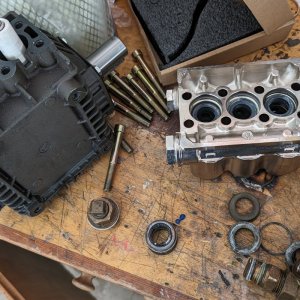It appears that you are actually asking two separate questions:
1. Negative Air: What amount of negative pressure is required when installing negative air machines in order to sustain appropriate conainment
2. Air Scrubbing: How much air do I need to filter to properly scrub the air in a contaminated work space
These are actually two entirely separate considerations.
For the first, I refer to the
IICRC S520. When setting up a negative air machine to depressurize a work area, enough air should be removed from the space to generate enough pressure differential to ensure airborne contaminants do not spread to unaffected areas. "Pressure differentials of at least 5 to 7 Pa (.02 to .028 w.c.) should be maintained during the project"
ANSI/IICRC S520, 2008, Pg. 106, paragraph 1.
The amount of air necessary to establish and maintain this pressure differential is directly related to how tightly enclosed the work area is. The more leakage to the space, the more air must be removed to generate the pressure differential. Differentials are monitored with a manometer.
for the second, I refer to both the
IICRC S520 and the ACGIH Guide to Bioaerosols (American Conference of Governmental Industrial Hygienists). These two sources are similar, yet slightly different, in the way they quantify the amount of air needed through a filtration device to achieve appropriate filtration in a work area. Generally, air must be filtered between 4 and 12 times, depending upon the severity and risk of the particulate. As an example, general air scrubbing for no purpose beyond the control of normal atmospheric particulate would require 4 air changes per hour. An extreme condition where high risk particulate is being generated during the remediation of a known hazardous contaminant requires 12 air changes per hour.
Once the number of air changes are established, the following formula is used to determine how many CFM are needed to accomplish the work:
Work Area:
Length
x
Width
x
Height
=
Cubic Feet of air to be scrubbed.
Next, multiply by the air exchanges desired.
Finally, divide by '60'
This is done to convert the 'air exchanges per
hour to cubic feet per
minute.
Example:
30 (L) x 30 (W) x 10(H) x 5 (AEH) / 60 = 150 CFM of filtration required.
Hope this helps.


